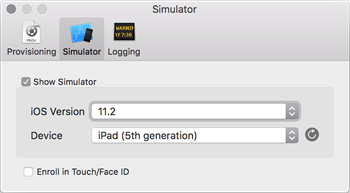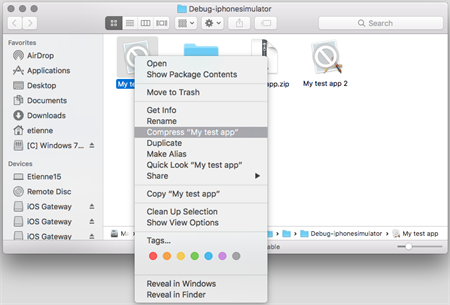The iOS Gateway application can simulate physical devices running iOS 9.0 and later. You can connect to these simulated devices in Eggplant Functional and run tests as you would on an iPhone or iPad. Follow these steps to get started.
Connect to a Simulator
- In iOS Gateway, go to iOSGateway > Preferences and select the Simulator tab.

- Select the Show Simulator checkbox. Choose an iOS device and iOS version from the drop-down menus. Note that you can install more iOS versions to simulate in Xcode.
- The simulated device’s IP address is shown in the title bar of the main iOS Gateway window. The port number displays in the device list at the left of the iOS Gateway window
- Click Start VNC Server from the top menu in iOS Gateway.
- In Eggplant Functional, open the Connection List from the Connection menu.
- Create a connection to the iOS Gateway simulator in using the IP address and port from Step 3.
Note: Select the Enroll in Touch/Face ID checkbox if you need to simulate Touch ID or Face ID in your testing.
Installing Apps on a Simulator
You don't install .ipa files on an iOS simulator like you do on a physical iOS device. Instead, you install .app bundles or compressed bundles (.zip format).
To compress a .app file in the Finder on a Mac, right-click its icon and select Compress.

To install an app on a connected simulator, follow these steps.
- Go to Apps > Install Application.
- Find and open the app you want to install from your Mac.
- The app appears in the list of installed apps on the right side of the iOS Gateway window.